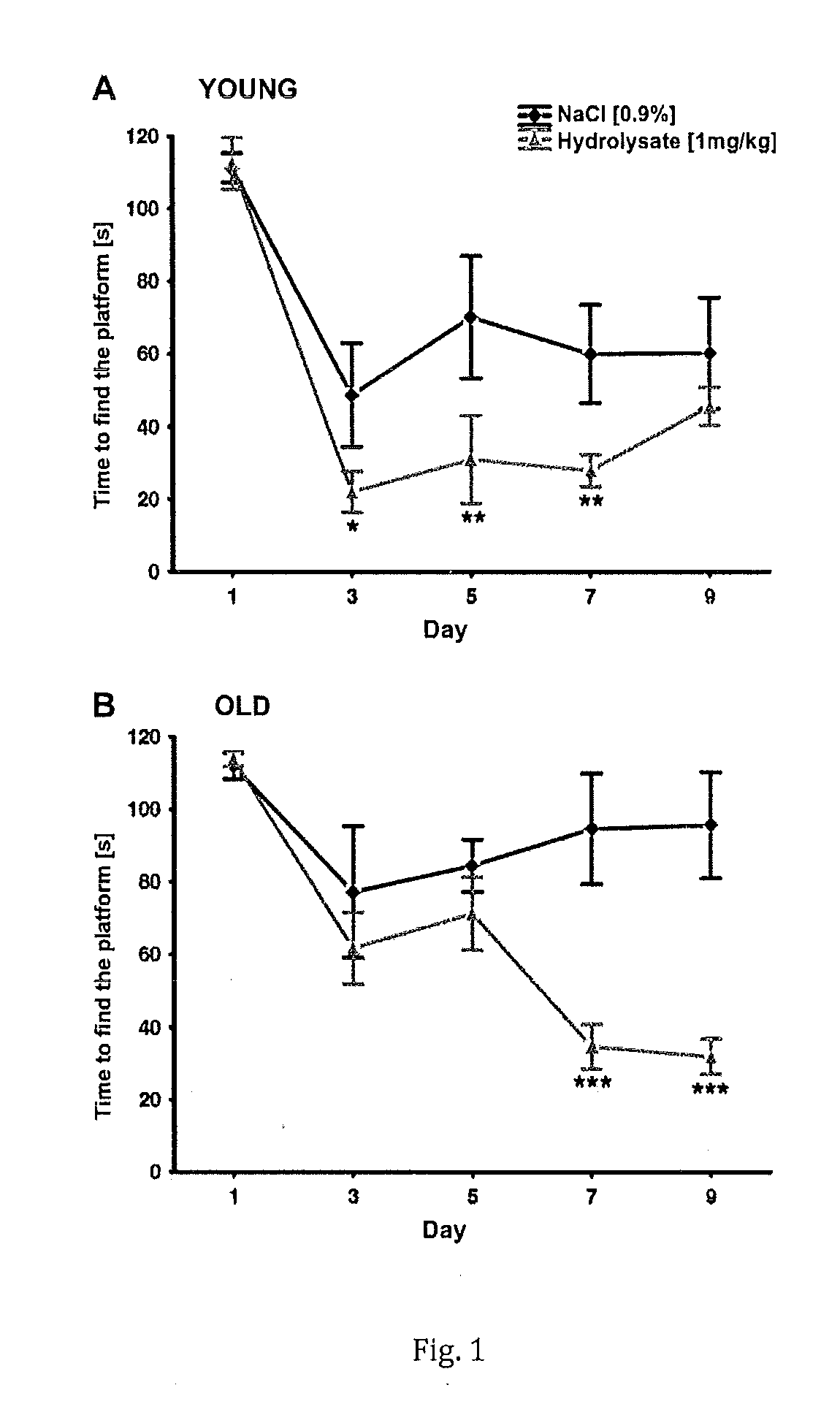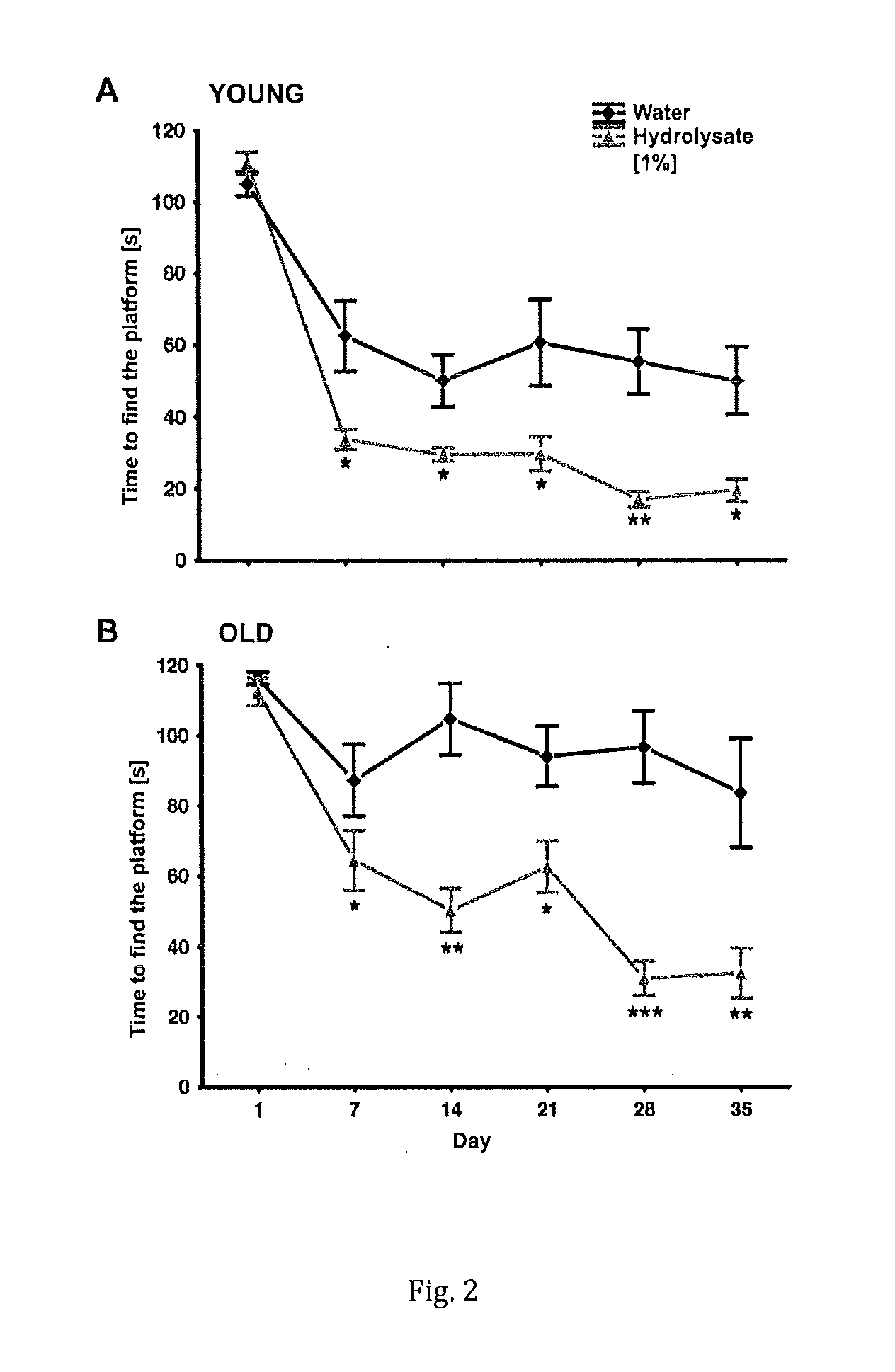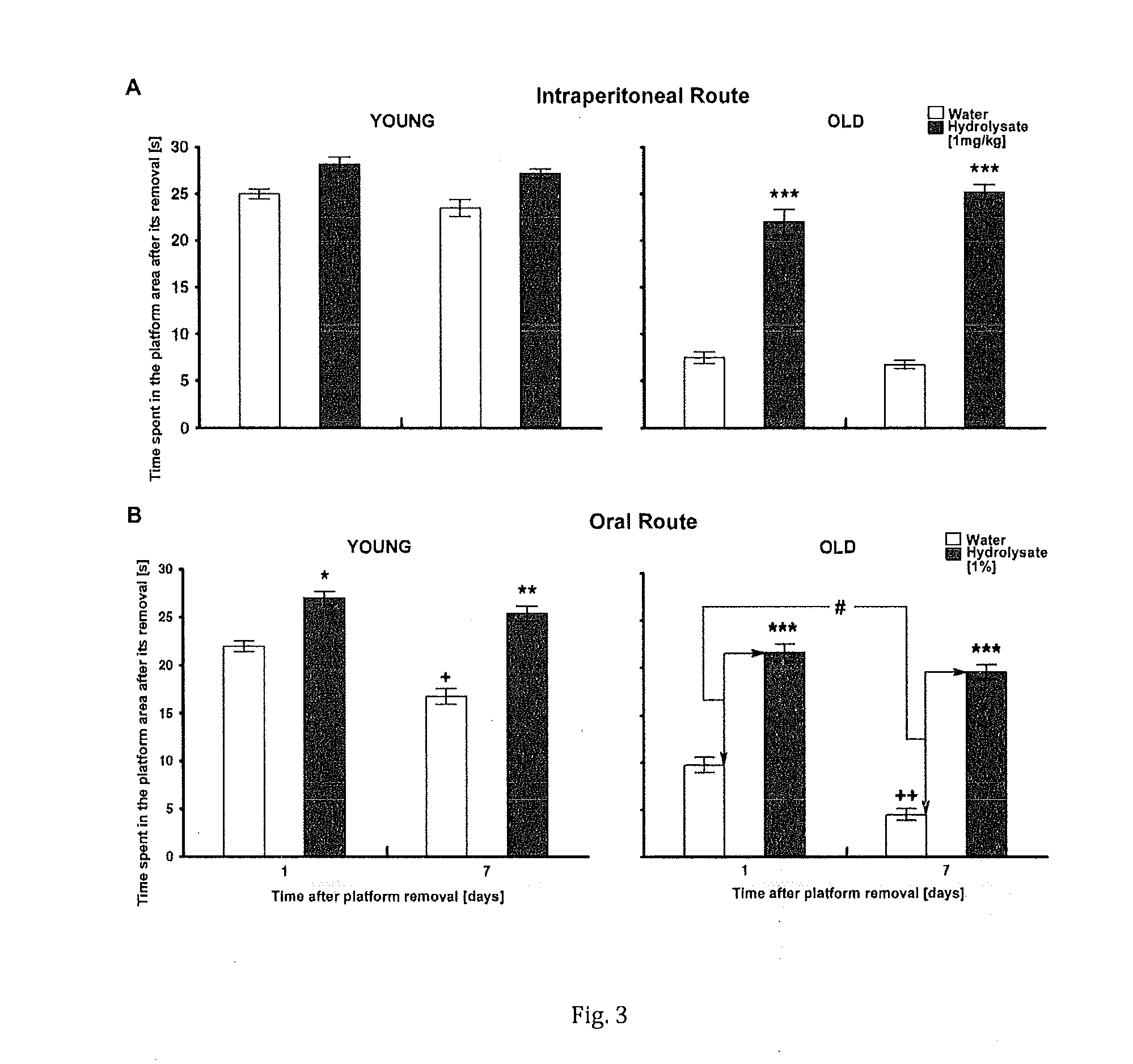Preparation for improving memory and learning and use thereof
a technology applied in the field of preparation for improving memory and learning, can solve the problem of relatively high cost of active substances, and achieve the effect of aconsiderable delay in the pharmacological
- Summary
- Abstract
- Description
- Claims
- Application Information
AI Technical Summary
Benefits of technology
Problems solved by technology
Method used
Image
Examples
example 1
1. Process to Obtain Hydrolysate
[0060]Fresh porcine spinal cord was milled and mixed with 60% aqueous ethanol solution in the volume ratio 1:2 (substrate: ethanol). After mixing, the material was left for 24 hours at 5° C. The precipitate was then centrifuged, the resulting solid residue was dried from remaining ethanol at room temperature and under reduced pressure (20-50 mm Hg).
[0061]The dry solid was fragmented and suspended in 6 parts by weight of water. The suspension was stirred and acidified with 1% hydrochloric acid to pH 1.6, followed by addition of pepsin of activity jFiP 1200 / g in an amount of 0.3% by weight of the starting amount of dry residue. The mixture was heated to 40° C. and the acidity of the reaction mixture was controlled to maintain within pH 1.6-1.9 by the appropriate addition of hydrochloric acid. After 5 hours, the mixture was heated to 80° C. and rapidly cooled to room temperature (21° C.). The remaining precipitate was filtered and washed with 0.5 part o...
example 2
[0064]Study of the effect of Spineurine administration on learning and memory using the swim test with a hidden platform in mice
1. The Experimental Material
[0065]The experimental material were the outbred male Swiss-Webster mice. The experiments were performed in a experimental lab under standard conditions (temperature 22-23° C. and a 12 hour cycle of light—7:00-19.00 light phase). Provided was unlimited access to water and food (standard food for rodents in the form of pellets from LABOFEED H, Poland: 22% protein (with 1.5% lysine), 5% crude fiber, 4% crude fat, 6.5% crude ash and calories 13.4 kcal / g). Mice were selected randomly to the experimental groups and housed individually in cages (Plexiglas). Each animal was weighed daily and checked for health conditions by a veterinarian. Testing all of the mice was preformed at the same time (between the hours of 9.00 and 14.00). During the experiments the employees who tested the mice were not informed whether the particular mouse ha...
example 3
Assessment of Spineurine Administration Using a Model of Passive Avoidance of Negative Taste Stimuli in Day-Old Chicks (Passive Avoidance Task in One-Day Old Chicks)
1. The Testing Method
[0094]The method is based on avoidance of pecking artificial grain coated with a bitter tasting substance, methyl anthranilate (MeA) (Gherkin, 1969, Rose, 1991). At the beginning of the experiment chicks are presented three times with the white grain of a diameter of 2 mm for 10 seconds every 5 minutes to verify if the animals are eager to peck. Then the animals are presented with the MeA coated metal grain. Only animals showing the correct response to the bitter taste (shaking their head and the whole body, closing eyes and cleaning their beak against the floor) are found eligible for the experiment. Animals are also tested by the presentation of the metal grains not covered by any substance. This test is performed at various times after the first training (from 1 to 24 hours.). Following the presen...
PUM
| Property | Measurement | Unit |
|---|---|---|
| temperature | aaaaa | aaaaa |
| time | aaaaa | aaaaa |
| pressure | aaaaa | aaaaa |
Abstract
Description
Claims
Application Information
 Login to View More
Login to View More - R&D
- Intellectual Property
- Life Sciences
- Materials
- Tech Scout
- Unparalleled Data Quality
- Higher Quality Content
- 60% Fewer Hallucinations
Browse by: Latest US Patents, China's latest patents, Technical Efficacy Thesaurus, Application Domain, Technology Topic, Popular Technical Reports.
© 2025 PatSnap. All rights reserved.Legal|Privacy policy|Modern Slavery Act Transparency Statement|Sitemap|About US| Contact US: help@patsnap.com



